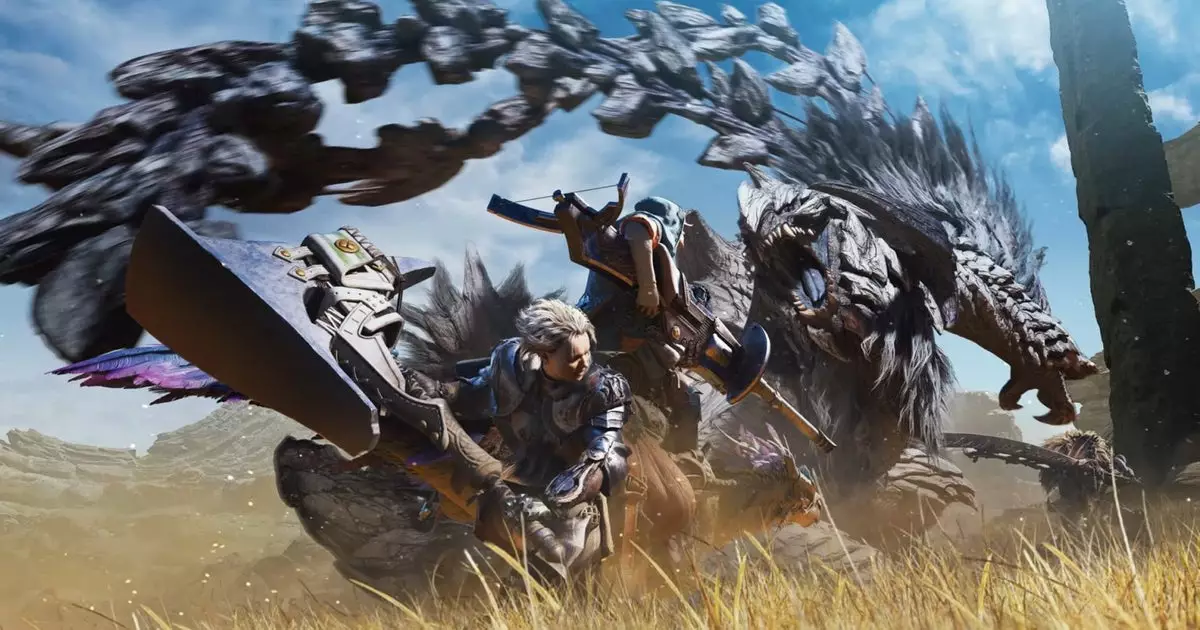The realm of Monster Hunter has consistently captivated players with its rich ecosystems and fascinating, fearsome creatures. With the recent release of **Monster Hunter Wilds**, Capcom has elected to refine the existing weaponry, rather than introduce an influx of new weapon classes. This cautious approach raises poignant questions about innovation in game design and player engagement.
At its core, Monster Hunter Wilds is steeped in the legacy of its predecessors. Many of the weapon types players can wield today echo the familiar tools of 2007’s **Monster Hunter Freedom 2**. Despite the graphical enhancements and move-set tweaks, the essence of each weapon feels emotionally situated in the past. The traditional weapon categories, including stalwarts like the Greatsword and the Hunting Horn, remain vital components of gameplay.
According to director **Yuya Tokuda**, the focus of the development team has been to enhance existing weapons instead of introducing a 15th classification. This prioritization stems from the challenges of ensuring that each weapon feels distinct while adding meaningful depth. Tokuda emphasizes that the resources and efforts invested in perfecting the current arsenal were deemed a more effective approach than cramming new weapons into an already diverse lineup.
One of the most fascinating aspects of weapon design in the Monster Hunter franchise is the complexity behind achieving balance in gameplay. Introducing a new weapon necessitates contending with the interconnected dynamics of existing types, which requires an exhaustive analysis of each class to maintain game equilibrium. Tokuda’s rationale can be understood through the lens of maintaining a harmonious combat system where the sophistication of moves and combos can enrich player experience without overshadowing the tried-and-true favorites.
For many players, the potential for new weaponry is enticing, but the implications of this addition can lead to overwhelming complexities rather than enriching gameplay. This creates a paradox where new weapons, instead of serving as engaging options, might clutter the experience, thus detracting from what fans cherish about the series.
In the case of Wilds, the transition from **Monster Hunter: World**, particularly its Iceborne expansion, serves as a poignant reminder of increased difficulty and mastery expected of players. Iceborne brought advanced mechanics that incentivized players to refine their skills. However, introducing radical changes with new weapons in Wilds, even if they appeared visually pleasing, could alienate novices who are still grappling with foundational mechanics.
What sets Monster Hunter apart from other franchises, such as **Call of Duty**, is not merely its unique aesthetic and themes involving monster-slaying but also the philosophical engagement with creature design and weaponry. Every weapon is intimately linked to the universe’s creatures; each piece feels like a trophy, a story of conquest that resonates with players. This inherent relationship between the monster and its corresponding weapon underscores the foundational ethos of the series.
Looking ahead, the possibilities for evolving the Monster Hunter experience remain tantalizing. Would it benefit Capcom to explore bold, innovative weapon concepts inspired by the very monsters they design? Envisioning hybrid creations—a **wyvern** that embodies the essence of creativity or an insect monster with an avant-garde structure—could lead to groundbreaking mechanics that challenge traditional gameplay paradigms.
As amusing as it might be to consider, the vision of an entirely balloon-inspired wyvern or a sleek, minimalistic dinosaur pushes the boundaries of creativity in weapon design. Such artistic formulations could not only engage the current player base but also attract new players curious about the rich world Capcom has crafted over decades.
As we delve into the intricacies of **Monster Hunter Wilds**, it becomes evident that while the joy derived from new and exciting weapons is palpable, there is a profound merit in returning to a well-crafted arsenal. Capcom’s focus on refining and balancing existing weaponry embodies the delicate equilibrium between maintaining player nostalgia and offering players fresh perspectives. The ongoing journey into the realm of Monster Hunter remains engaging, inviting players to appreciate the beauty in mastery while eagerly awaiting what the future—both in terms of creatures and their weaponized forms—may hold.

